By Lucey Walton, Lebanon Valley College, Umbra Rep student
Being in Italy for nearly 4 months sounds like a dream come true to some and a daunting task for others. Going abroad for a full semester is seen in both an overly romanticized and an overly intimidating point of view, making it hard for students to know what to expect. Studying abroad was something that I knew I wanted to do in college for a long time, and it was something that impacted my decisions when applying for colleges. I’m very lucky to come from a family where travelling is very important, having lived in the US and the UK. Growing up, my brothers and I were always told that travelling gives you more of an education than a school ever can.
Although I had a lot of experience in travelling, this was my first trip abroad by myself, without my parents’ help to guide me. I was very nervous about navigating through the airport the most, worrying about the many things that could possibly go wrong. In the end, the airports were not as big of an obstacle, but I was sadly mistaken to think that I was much more prepared for living abroad than I really was.
Students studying abroad are told how this is going to be the best semester that they have in their college careers, and when you first arrive here, it certainly feels that way. At first, it feels like a vacation, wandering about the town, amazed at every sight, with the new experience of living in an apartment for the first time to come back to. But after about 2 weeks everything starts to become real.
Similarly to the few weeks of college during freshman year, it is very easy for anxiousness and overthinking to build up. It can feel much worse than how you might have felt at the beginning of freshman year since you are thousands of miles away from home, with a 6-hour time difference that limits your ability to talk with close friends and family, in a brand-new city that speaks a completely different language with a group of people who you have only met a few weeks prior.
It can be very overwhelming to be worrying about grades, budgeting, navigating a new city, planning new trips, and a million other responsibilities while having fears of missing out on top of it all. With so many emotions building up with limited time to talk with those who you go to first for help, you can feel very alone, even though so many students will be going through the same exact challenges. But just like in the first semester of college, it just takes small steps and time (and a few calls home) to get adjusted to your new life for the next several months.
Writing a blog about this isn’t meant to scare people away from studying abroad. I am still so happy to be abroad this semester and am very thankful to have this experience. Studying abroad is a great step in the direction of independence past college, especially for people who want to travel more or live abroad in the future. Rather, this is to try and paint a more realistic picture of what to expect when being far away from home for months at a time. When preparing to go abroad, it is just as important to prepare your mind and well-being as it is to double-check check you have packed your bag correctly. Realistically, no, not every single day you spend abroad is going to be the greatest time of your life, but every day is not going to be terrible either. The best advice for future students that I can give from my experience so far is to get involved. Just like in college back in the US, I found that being involved outside of just academics, such as attending school-sponsored activities, being an English tutor at a local high school, and being involved in the Umbra Reps program, helped me tremendously to get accustomed to life in Perugia. Find something to keep yourself busy outside of studying for classes and take the opportunities given to you, but know that it’s okay to spend time for just yourself instead of unrealistically trying to make the entire semester feel the same as those first two weeks.


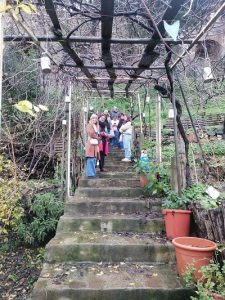 In September 2021, the Umbra Institute assumed management of Orto Sole to revitalize the garden and develop it as a living laboratory for the Institute’s Food, Sustainability and Environment program. The Institute will use the green urban hillside as its “outdoor classroom”: continuing the garden’s use as a didactic space, exploring new agricultural technologies, and sponsoring community-engaged learning projects with local partners.
In September 2021, the Umbra Institute assumed management of Orto Sole to revitalize the garden and develop it as a living laboratory for the Institute’s Food, Sustainability and Environment program. The Institute will use the green urban hillside as its “outdoor classroom”: continuing the garden’s use as a didactic space, exploring new agricultural technologies, and sponsoring community-engaged learning projects with local partners.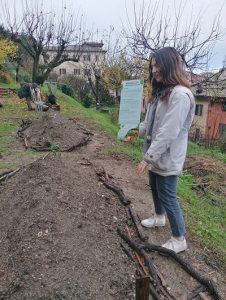 Some of their projects for example involved the creation of Hugekultur, layered mounds of decaying wood debris and other compostable biomass and plant materials, left to break down in time into a nutrient-rich raised bed. Another project of agricultural value was surely the Worm Towers, structures where worms will gather and consume the organic compost inside, and will then spread in the garden and fertilize the soil.
Some of their projects for example involved the creation of Hugekultur, layered mounds of decaying wood debris and other compostable biomass and plant materials, left to break down in time into a nutrient-rich raised bed. Another project of agricultural value was surely the Worm Towers, structures where worms will gather and consume the organic compost inside, and will then spread in the garden and fertilize the soil.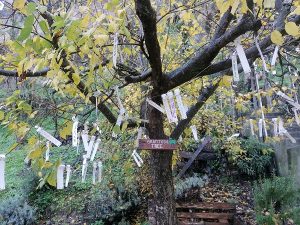
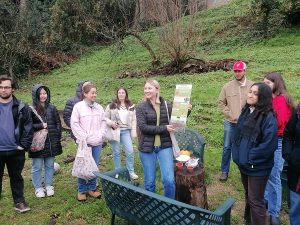 Needless to say, we are proud of the work that has been put into the Orto, and both as Umbra body and as part of the bigger Perugian community, we hope more will continue to be done in the future!
Needless to say, we are proud of the work that has been put into the Orto, and both as Umbra body and as part of the bigger Perugian community, we hope more will continue to be done in the future!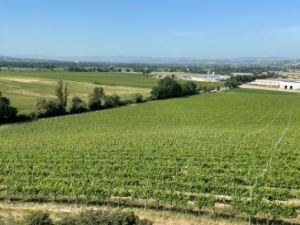
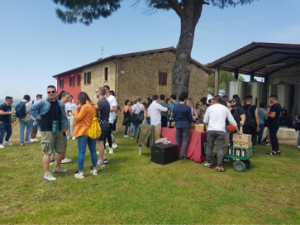 Another of my favorite experiences was participating in a multiple day bottling
Another of my favorite experiences was participating in a multiple day bottling 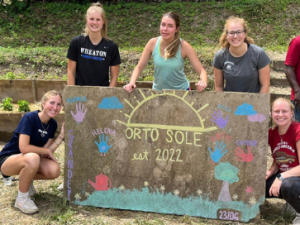 The beginning of the summer was mostly spent on physical projects, turning the overgrown, terraced plot of land into a functioning garden. A typical workday started at 9am with the fundamentals of gardening: weeding and watering. This year we attempted many annual crops throughout several different garden beds, so we were constantly battling the weeds that crept through our mulch. In June, most of my projects were physical – we’d spend several days fixing wooden stairs throughout the garden, clearing new raised beds for next summer, staking and pruning tomato plants, and clearing bushes from the archways located at the top of our garden. One archway is large enough to become an outdoor classroom, so we worked to clear the overgrown bushes from its entrance, flatten the ground, remove large pieces of trash, and plan for this new didactic space.
The beginning of the summer was mostly spent on physical projects, turning the overgrown, terraced plot of land into a functioning garden. A typical workday started at 9am with the fundamentals of gardening: weeding and watering. This year we attempted many annual crops throughout several different garden beds, so we were constantly battling the weeds that crept through our mulch. In June, most of my projects were physical – we’d spend several days fixing wooden stairs throughout the garden, clearing new raised beds for next summer, staking and pruning tomato plants, and clearing bushes from the archways located at the top of our garden. One archway is large enough to become an outdoor classroom, so we worked to clear the overgrown bushes from its entrance, flatten the ground, remove large pieces of trash, and plan for this new didactic space.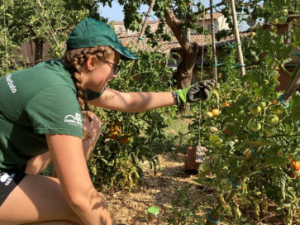
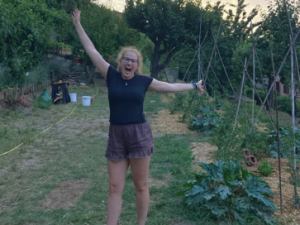 ON WHY ORTO SOLE MATTERS
ON WHY ORTO SOLE MATTERS 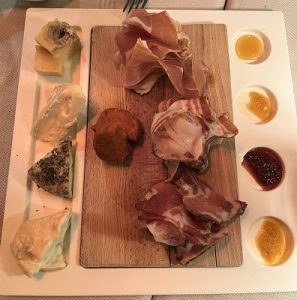 Antipasti
Antipasti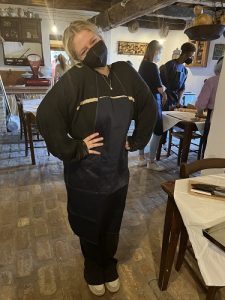 Secondi
Secondi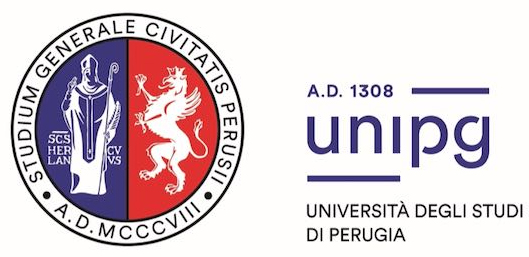 The Umbra Institute’s didactic garden,
The Umbra Institute’s didactic garden,